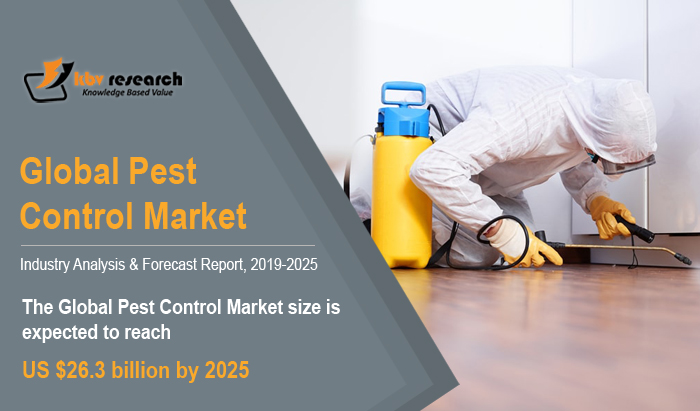
Pest control is the first line of defense against bugs and rodents invading home or business, destroying property. These bugs and rodents cost hundreds or even thousands of dollars’ worth of damage. It is not easy to detect certain insects, including cockroaches and termites. These may remain hidden under floorboards and walls for long periods, eating a property's structure and leading to expensive bills for extermination and repair. Since there is no specific way to detect whether a pest carries a disease until it is too late, pest control can be sought as the best way to protect the environment.
Pest control inhibits and controls the pest species. Pests adversely affect human activities. The human reaction is based on the meaning of the harm done, ranging from tolerance through deterrence and management to efforts to prevent the pest. Measures can be implemented as part of an integrated pest control plan.
The importance of controlling pests has resulted in a multitude of insecticides being produced to prevent losses in the spread of agriculture and disease. Toxicological studies based on acute and chronic exposure effects have shown that several classical insecticides are highly toxic to non-target species of insects, mammals, and humans. Furthermore, some organophosphorus insecticides were shown to cause long term effects on extensive exposure. The growing popularity of pest control technologies can be attributed to the growing urban development range and the advent of mega-cities with more than 15-20 million residents. The dense population and large middle-class population of these areas embrace pest control services.
People in both urban and rural areas make excessive use of pesticides and weedicides in their everyday lives in general, especially in food and agricultural products. Also, small and marginal farmers, fruit and vegetable growers, and most urban homeowners want to be free from weeds and pests including mosquitoes, cockroaches, and rodents.
In one form or the other, all kinds of agricultural products and food items enter the human body. Even pesticides and weedicides that are used by agricultural and animal products to protect crop residues, grasses and plants enter the human body.
The use of pesticides has contributed to detrimental effects on humans, animals, and biodiversity. Because of too much use of pesticides, numerous species of birds, aquatic organisms, and animals have already been extinct. Human beings also suffer from adverse effects that weaken their immune system and, consequently, lead to different diseases.
Electronics have affected nearly every aspect of life from health, entertainment, and safety to the sport, education, defense, and so on. Electronic pest control is a preferred technology to control and prevent the negative effects of toxic pesticides on humans, animals, and biodiversity.
An electronic pest control machine doesn't use messy traps, chemicals, poisons or other hazardous substances. Electronic pest control may not kill, but only pests repel mosquitoes and rodents. An electronic repellent for pests is, therefore, environmentally friendly and human-friendly technology for pest control.
In addition, advanced electronic pest and mosquito systems are well equipped with new technology for air purifying. These are based on the use, or all in one, of electromagnetic, ionic, or ultrasonic technology. There are many user-friendly features and capabilities of electronic pest control systems based on these concepts.
While the idea of bundling products is far from fresh, it can boost revenue and help eliminate seasonality by providing tiered packages to clients. Bundled services offer undeniable quality to consumers as they no longer have to pay for products a la carte and prevent repeated visits. On the other hand, in a single visit, technicians perform multiple services. This removes the need for fuel and wages to be spent on separate trips to the same client. It also allows customers to choose which products best suit their needs and budget by providing multiple tiered bundles.
Foodservice enterprises tend to have a low margin and depend on varying quality ingredients at the best deals. However, increasingly stringent regulations on food safety mean buyers have to choose reputable suppliers to ensure food safety and quality. The National Pest Management Association (NPMA) in America suggests that business owners should partner with qualified pest control companies to develop an integrated pest management system. The major vendors in this industry help businesses safely meet legislative and audit requirements.
In recent times, the pest control industry has experienced a makeover. Small and mid-sized operations were acquired by the giants that plan to extend their local reach. The acquisitions of four PCT Top 100 firms and other acquisitions have been prominent throughout May 2018. This puts smaller operations in a position to reconsider their business strategy with national and international companies buying up PCOs across the United States.
Click Here For Free Insights: https://www.kbvresearch.com/news/pest-control-market/
PCOs can essentially choose to compete at a local level with industry leaders or take the time to prepare for an acquisition or merger of their business. This may be a difficult situation for long-term owners to face, but the market is booming and it may be the right time to capitalize on it. With more than 30 high-profile deals taking place in 2018, the restructuring of the sector is unlikely to slow down in the coming years.
To Conclude
The pest control market is progressing as new technologies pop up and consumer expectations shift. Macro patterns are being widely discussed and acknowledged as part of the overall picture of the future. These are set to have an impact on how to control crop pests and diseases. The future of pest control over 10 to 15 years could be set to change very drastically. Many of the developments expected are already beginning to emerge and the technologies are rapidly evolving. The global pest control market is expected to rise at a growth rate of 5.3% CAGR over the coming years.